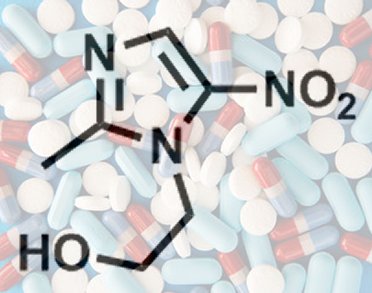5-Nitroimidazole (5-NI) drugs are imidazole derivatives that display antibiotic activity. Metronidazole (pictured), the most common 5-NI, is largely used in clinical practice to treat different bacterial and parasitic infections. The utility of this drug, however, is challenged by the emergence of resistant pathogens.
This problem prompted Yukiko Miyamotoa, University of California, CA, USA, and colleagues to produce and evaluate a library of novel 5-NI drugs. To achieve this goal, the researchers first synthesized six 5-NI azido derivatives by functionalizing the imidazole core contained in metronidazole, with azidoalkyl groups. Subsequently, the scientists joined the 5-NI azido derivatives with 63 structurally diverse alkynes though an azide alkyne cycloaddition, namely a copper(I)-catalyzed reaction between an azide and an alkyne to yield a 1,4-substituted 1,2,3-triazole. This approach led to more than 650 novel 5-NI derivatives having structurally diverse functional groups.
When compared to metronidazole, the majority of new the compounds showed superior activity against a wide range of pathogens. Furthermore, many novel 5-NI derivatives were effective against metronidazole-resistant pathogens.
- Expanded therapeutic potential in activity space of next-generation 5-nitroimidazole antimicrobials with broad structural diversity,
Y. Miyamoto, J. Kalisiak, K. Korthals, T. Lauwaet, D. Y. Cheung, R. Lozano, E. R. Cobo, P. Upcroft, J. A. Upcroft, D. E. Berg, F. D. Gillin, V. V. Fokin, K. B. Sharpless, L. Eckmann,
PNAS 2013.
DOI: 10.1073/pnas.1302664110




